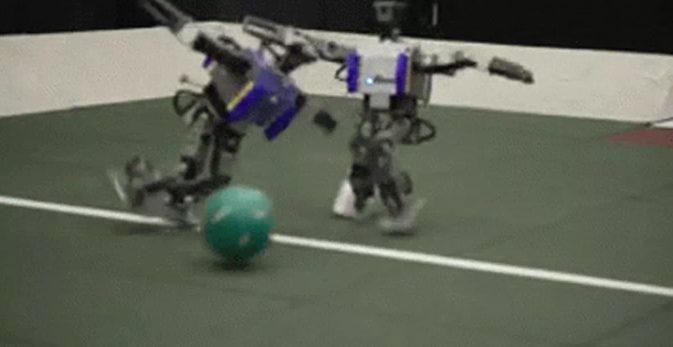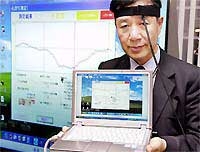Thanks to a new AI training method, robots can now autonomously improve their skills and participate in a simulated soccer match.
Watch AI-trained robots dribble, pass, and score. (Video: Google DeepMind).
Humanoid robots have long represented the aspirations of scientists to create devices that can simulate human activities, serving various purposes.
However, the development of humanoid robots has always faced significant limitations, as every movement must be programmed, requiring scientists to compile vast amounts of data.
Today, robotic technology has received substantial assistance from AI, marking a significant turning point in the development and practical deployment of robots.
The self-learning capability of AI means that robots no longer need to move according to pre-programmed instructions; they can perform techniques independently without direct human control.
In a recent study, scientists at Google DeepMind trained the Robotis OP3 robot to play soccer using a technique called “deep reinforcement learning.”
This machine learning technique combines various AI training methods. Here, the robot uses an algorithmic network that functions similarly to artificial neurons, arranged akin to the human brain.

The AI-trained robot has developed complex emergency motion behaviors that are extremely difficult to program, such as pivoting on its foot, spinning around to outmaneuver opponents…
In the simulated matches, the AI-trained robot moved 181% faster, turned 302% quicker, kicked the ball 34% faster, and took 63% less time to recover after falling compared to untrained robots using traditional techniques.
From the recorded footage, it is evident that the robot can perform complex maneuvers like dribbling, blocking, passing, and scoring with relative skill and speed.
Researchers also noted that the robot developed emergency motion behaviors that are exceptionally difficult to program, such as pivoting on its foot and spinning around to deceive opponents…
These findings suggest that this AI training technique could be used to create simpler, yet relatively safe movements in humanoid robots overall. From this starting point, robots can be enhanced with more complex movements and applied in more practical situations.
Similar technology has also enabled robots to brew coffee after just 10 hours of training.




















































